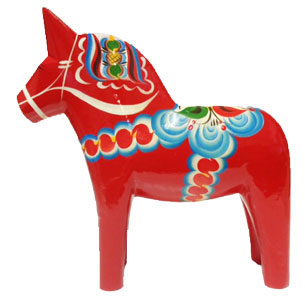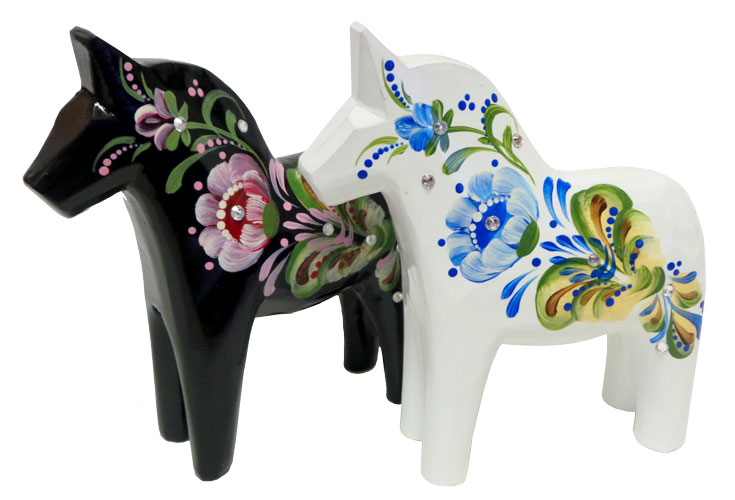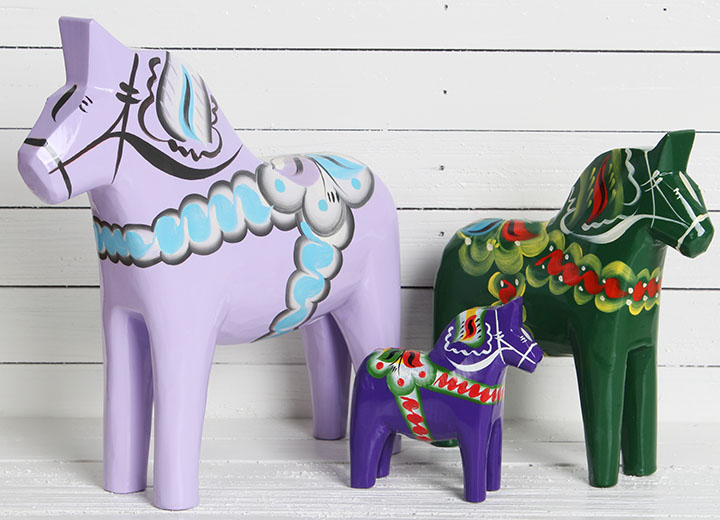Blog
The History of the Dala Horse
The brightly painted horse that symbolizes Sweden has interesting stories associated with it. One such story is this:
In the winter of 1716, while King Charles XII of Sweden waged war throughout most of Europe, many soldiers were quartered in private homes in the Mora area of Sweden. Because of the severe winter and the war, all suffered from lack of food and warmth. Tradition has it that one such soldier, in his spare time, carved a Dala Horse from some scrap wood in the home where he was staying. Before presenting it to the child of the home as a gift, he painted it a bright red.

This was a readily available color in this area, being produced from the copper mine at the nearby community of Falun. The soldier decorated the horse with kurbit painting for the harness and saddle. The use of kurbits as decorative motifs on the horse came from the soldier's deep religious background. It is the kurbit, or gourd, plant which grew up around Jonah as he sat outside the city of Ninevah and protected him from the sun's devastating rays. In return for this bright toy, the woman of the house gave the soldier a bowl of soup. He made another horse and received another bowl of soup. When word of his success in bartering for food reached the other soldiers, they too began carving and painting horses in exchange for food. Thus, the Dala Horse is credited in part with the army's surviving the cruel winter.
The horses we have on display and offer for sale at Hemslojd are carved and painted in the same Mora, Dalarna region of Sweden in which the soldier created his gift. These horses are cut out by skilled craftsmen who make using a band saw look easy! Once the blanks are shaped, skilled carvers go to work creating the individual horses. Each has its own character – some have slightly wider faces than others, some have slightly thinner legs – all designed by talented hands and creative minds.

Many of these horses go on to be dipped in large vats of paint for their base coats. Paint rooms are amazingly colorful and messy. Excess paint runs off each horse onto an angled paint table; from the paint table it flows back into the container it came from.
Once their bright base coats are dry, the horses go to artists. Talented hands paint saddles, bridles, manes and tails in minutes. Swirls, lines, dots and dabs are applied with skill to create the kurbits design. Most of these artists, similar to the soldier in the origin story, paint Dala Horses in their homes.
Once decorated, horses return to the hemslojd for a final dip in protective varnish.
Today’s hemslöjds have more paint options available to them than our soldier had. This has created a rainbow of horses, which we proudly offer in as many sizes as are available for import.



